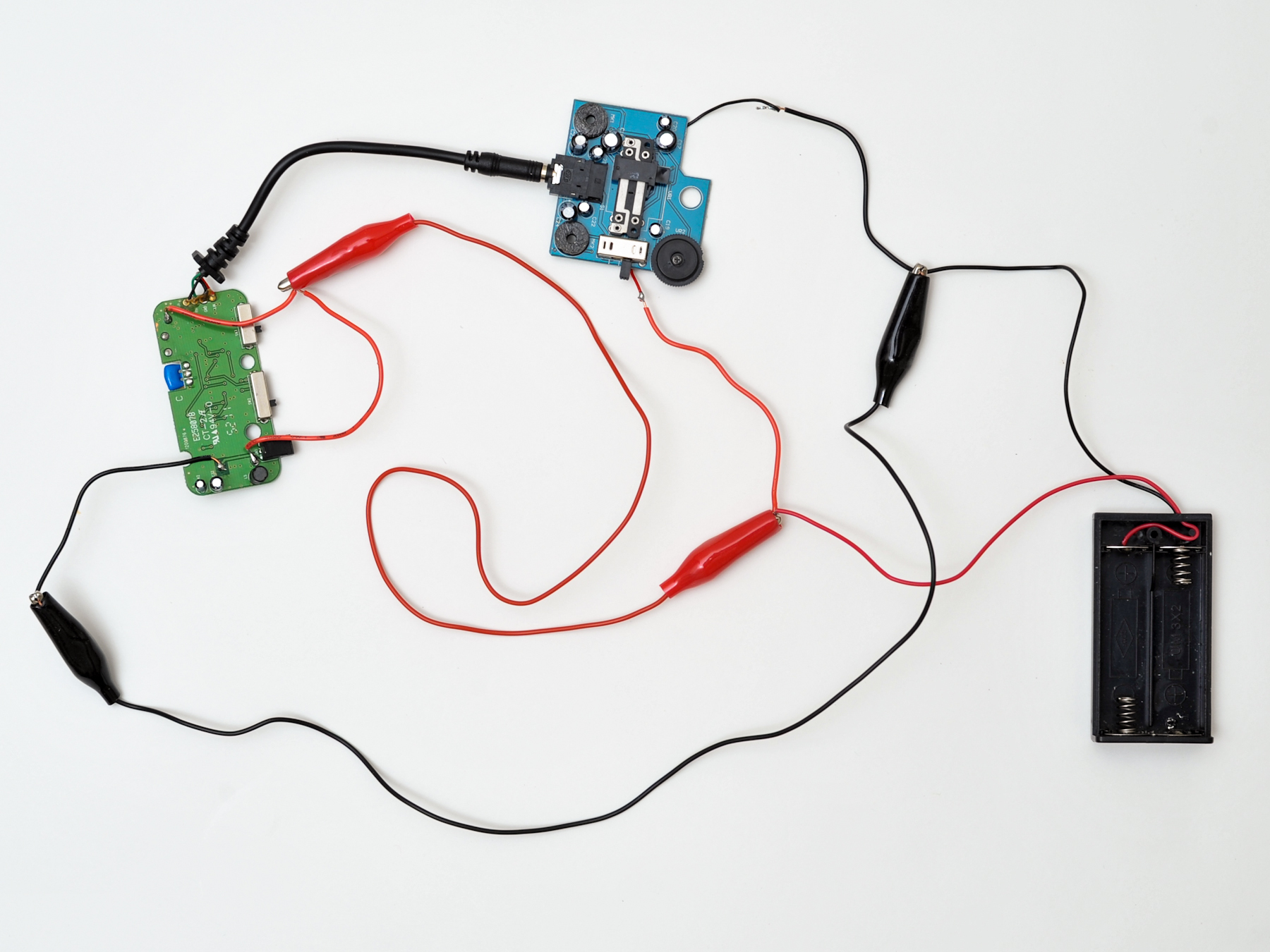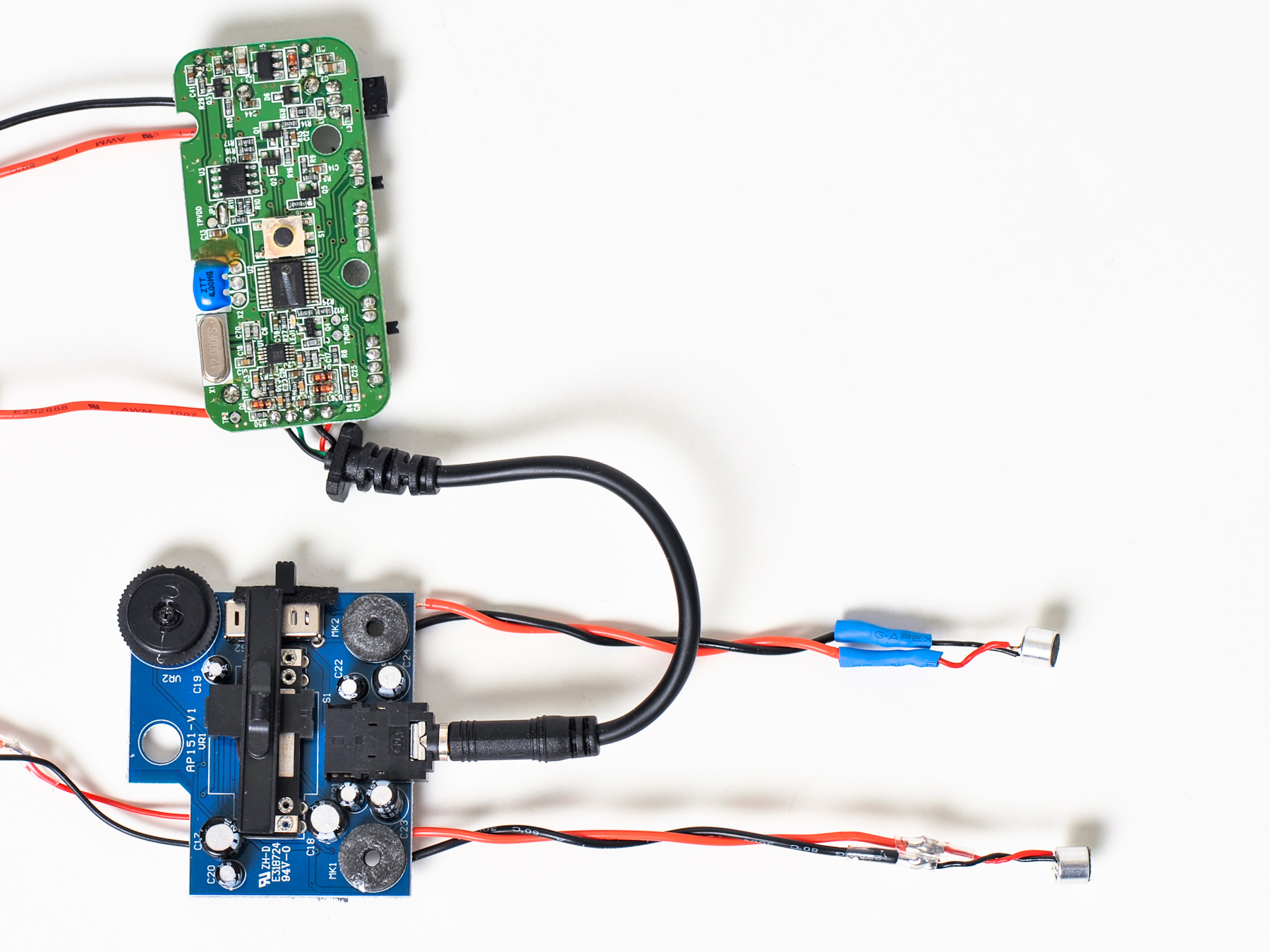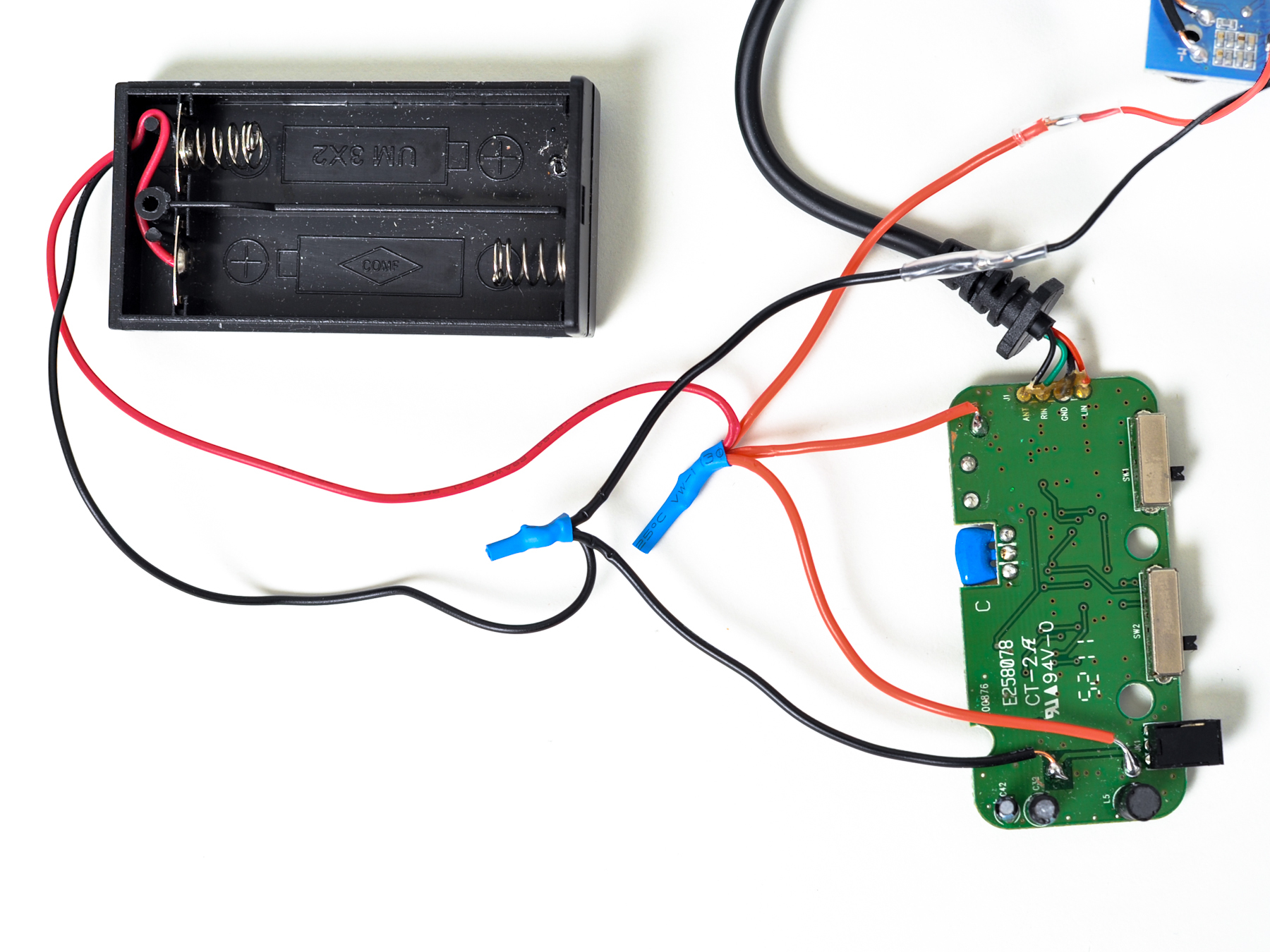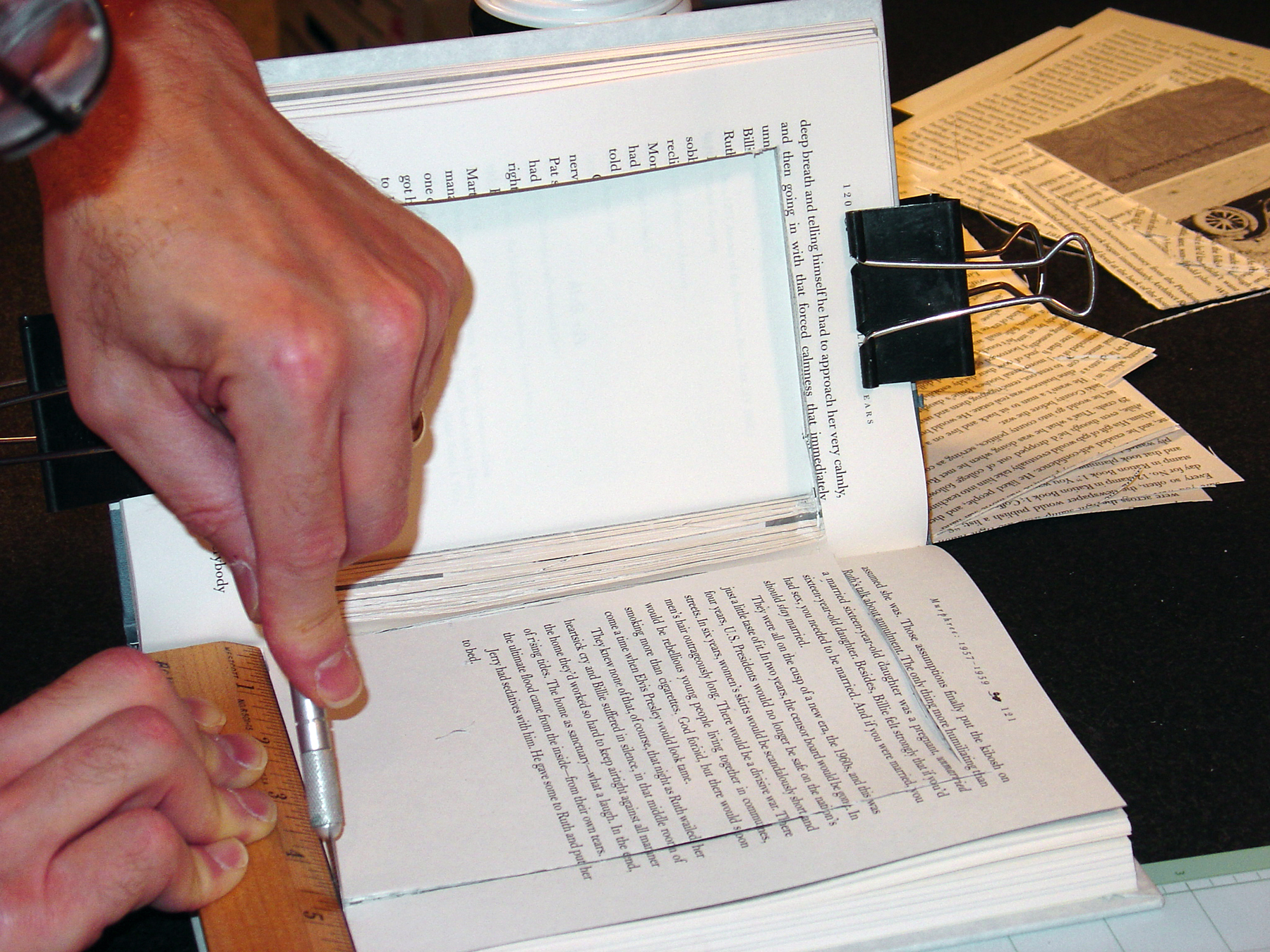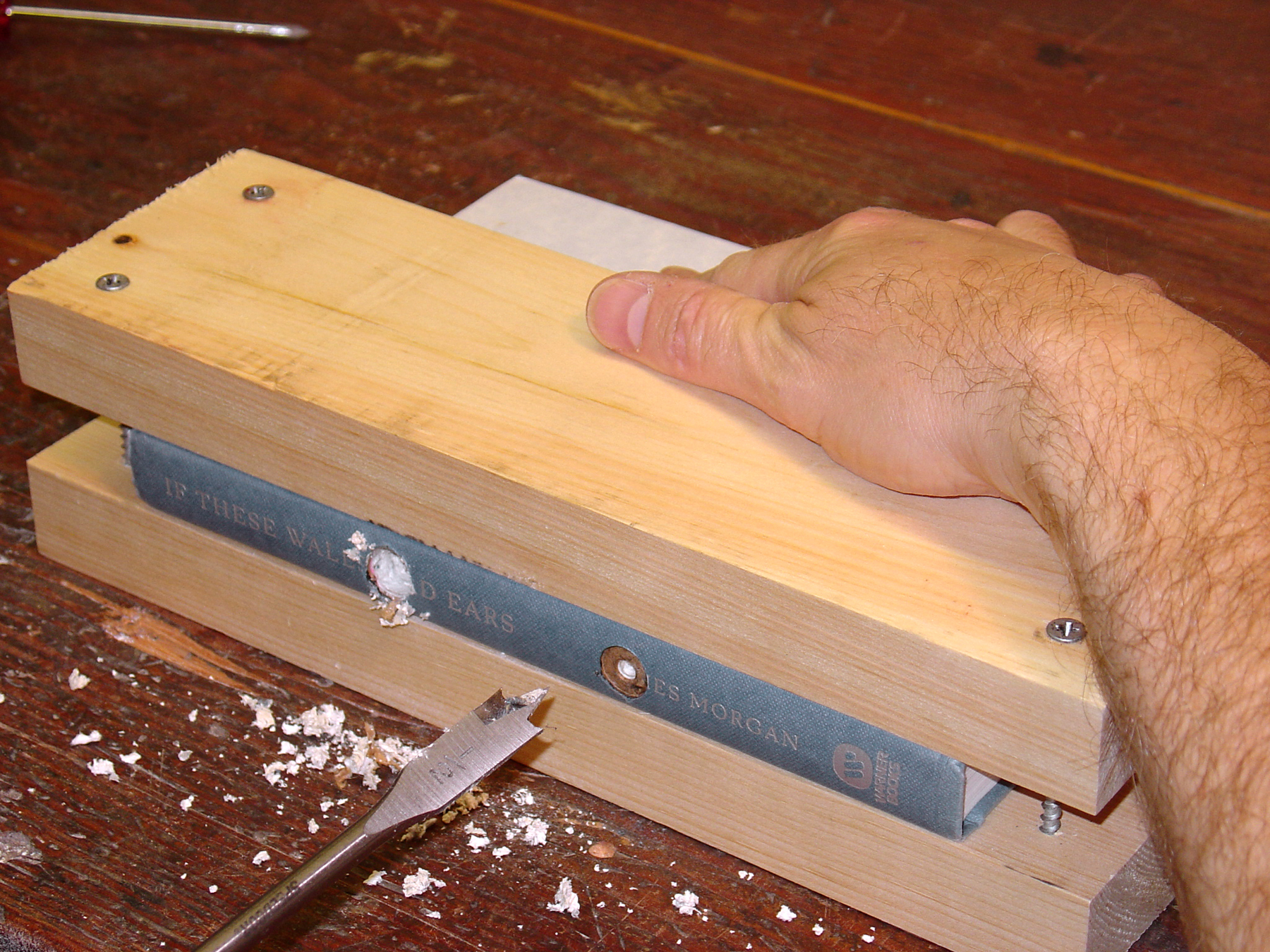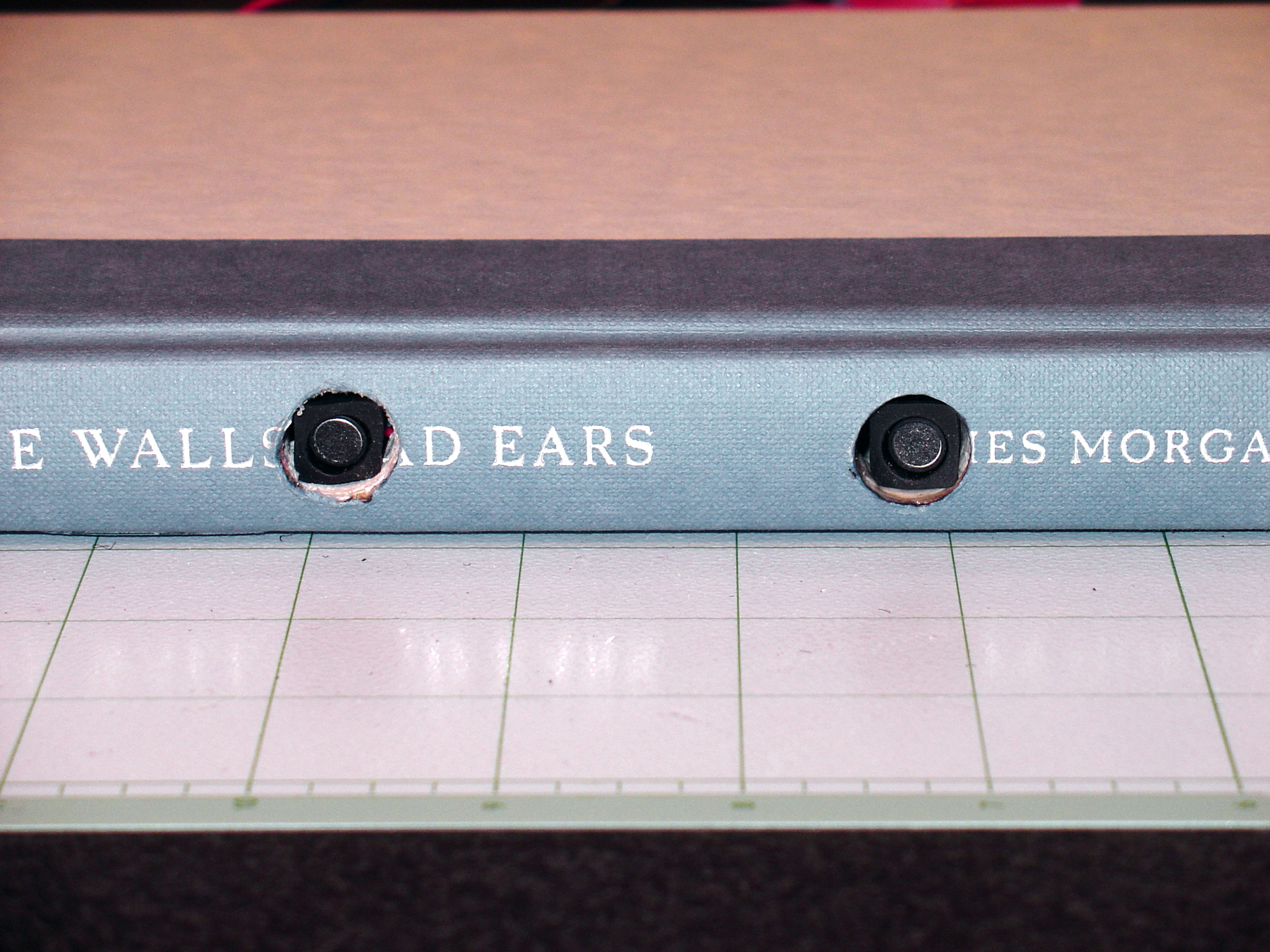Connect a shirt pocket “amplified listener” hearing aid with an in-car FM transmitter, and you’ve got a wireless bug.
Tuck them inside a hollowed-out book with the mic concealed by the dust cover, and you’ve got a covert listening device that you can leave lying around or on a shelf near a surveillance target. Then an undercover agent in the next room can eavesdrop on any devious plotting through her FM radio.
This is a fun and easy project, and if it weren’t for the “covert” part, you could have all the components working together before you leave the RadioShack where you got them. (Really, I did!)
I used a book to camouflage my listening system, but you can also use a stuffed animal, a plastic toy (the big robotic WALL-E has potential), a basket of potpourri, or maybe even your dog’s collar.
The important considerations are:
- Make sure the microphone isn’t obstructed.
- Provide an easy way to turn the power on and off.
- Don’t enclose the electronics in metal, which limits the transmitter’s range.
- Protect the delicate connections inside.




